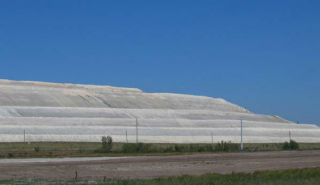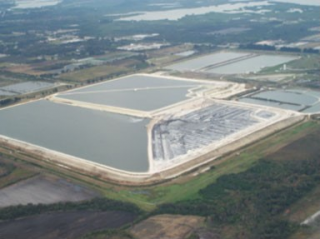Radioactive Material From Fertilizer Production
- Phosphogypsum, a waste product from manufacturing fertilizer, emits radon, a radioactive gas. It also contains the radioactive elements uranium, thorium and radium.
Phosphate rock mining is the fifth largest mining industry in the United States in terms of the amount of material mined. The phosphate industry is concentrated in the southeastern United States. About 75% of phosphate is mined in Florida and North Carolina with the rest in Idaho and Utah.
About Radioactive Material from Fertilizer Production
Source: U.S. Department of Agriculture (USDA)
Phosphate rock contains the mineral phosphorus, an ingredient used in some fertilizers to help plants grow strong roots. Phosphate rock contains small amounts of naturally-occurring radionuclides, mostly uranium and radium. When processing phosphate rock to make fertilizer, the phosphorous is removed by dissolving the rock in an acidic solution. The waste that is left behind is called phosphogypsum. Most of the naturally-occurring uranium found in phosphate rock ends up in the acid and the other radionuclides, including radium, mostly end up in the waste. Uranium and thorium decay to radium and radium decays to radon, a radioactive gas.
Source: U.S. Department of Agriculture (USDA)
The waste that is created during fertilizer production is stored in large piles called stacks. Some stacks cover hundreds of acres and are hundreds of feet high. In the aerial photo, you can see that the top of a phosphogypsum stack is covered in water.
Phosphogypsum is transported in pipes as slurry and is very watery when it is first put on the stack. As the phosphogypsum dries out, a crust forms on the stack. The crust thickens over time, reducing the amount of radon that can escape and helping keep the waste from blowing in the wind. Some of the water can leak out the bottom and pollute local groundwater.
What You Can Do
- Obey safety instructions. Phosphogypsum stacks are located on private property away from people. Unless you are visiting a facility, you will not encounter a phosphogypsum stack. If you are visiting a facility, always follow posted safety messages.


